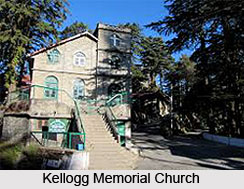 History of Landour completes the description of British East India Company rule and the British Government in India in the summer times, as this place is the summer seat to the Europeans.
History of Landour completes the description of British East India Company rule and the British Government in India in the summer times, as this place is the summer seat to the Europeans.
Formation of Landour
Landour is within Dehradun District of the former United Provinces. The United Provinces themselves were carved out of the former Northwest Province of the vast Bengal Presidency, which stretched from Burma to the Khyber Pass; accordingly, early accounts show Landour as part of Bengal (now West Bengal and Bangladesh), which was technically true though the description was incomplete.
Landour as the British Seat
Landour was initially built by and for the British Indian Army. From 1827 when a sanatorium was built in Landour, the town was a convalescent station for the military, and hence much of Landour is a Cantonment. The original sanatorium is now occupied by the Institute of Technology Management ("ITM") of the DRDO; it is at the eastern end of the Landour ridge.
Landour in Second World War
In the early 20th century, a full British Military Hospital (BMH) was opened, with a medical staff than specialized in tropical diseases; the hospital closed soon after 1947. Also within the ITM premises is the former Soldiers` Furlough Home, a holiday home for British and Irish soldiers and JCOs in Indian regiments who lacked the means to return to Europe regularly. Or, the holidaying soldiers were serving in British regiments on rotation in India, their tours of duty lasting anywhere from 6 to 48 months. In terms of area, Landour Cantonment comprises about two-thirds of Landour; the remainder includes Landour Bazaar, which stretches along the spur that connects to Mussoorie.
Mussoorie-Landour: Twin Tourist Destination
The first permanent building in all of Mussoorie-Landour was also built in Landour in 1825. The house was built by Captain Young, the discoverer of Mussoorie, who was also the Commandant of the first Gurkha (or Gorkha) battalion raised by the British after prevailing in the Gurkha War. Young`s house, "Mullingar" (hinting at his Irish blood), was the family home during the hot summers in the plains. Young`s Dehradun-based battalion, then called the Sirmour (or Sirmoor) Rifles, was initially raised in a Gurkha POW camp in Paonta Sahib in Sirmour District - hence the name. The huge L-shaped building, with an outsized courtyard inside the bend of the "L", sits prominently atop Mullingar Hill in Landour Cantonment.
Landour in 1857
From 1857, Landour became the permanent seat for the British Army, which led to a spurt in the European population of Mussoorie-Landour, with many families leaving the exposed towns of the Gangetic Plain. Among the Britons who thus moved to Landour were the parents of Jim Corbett.



















